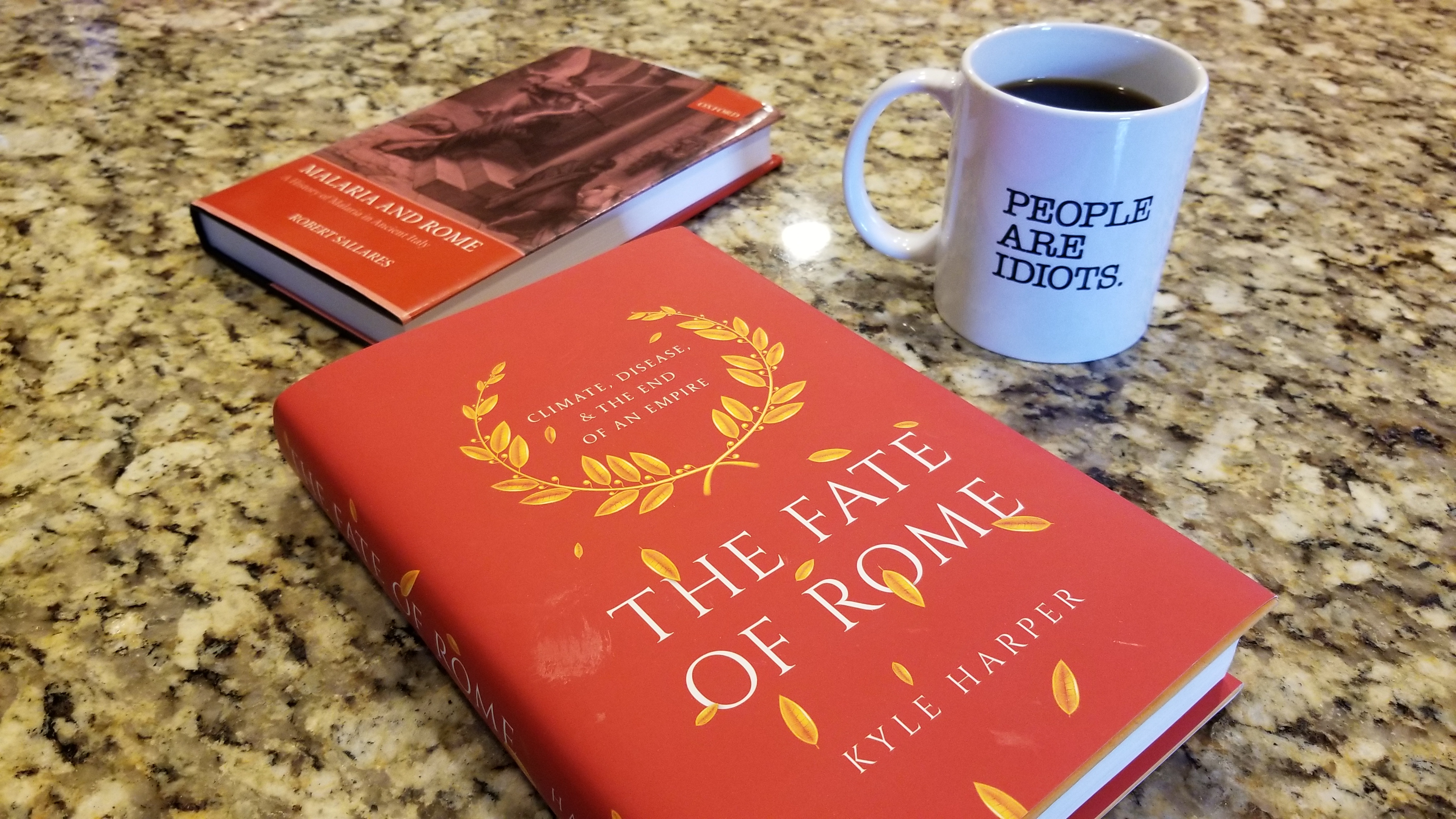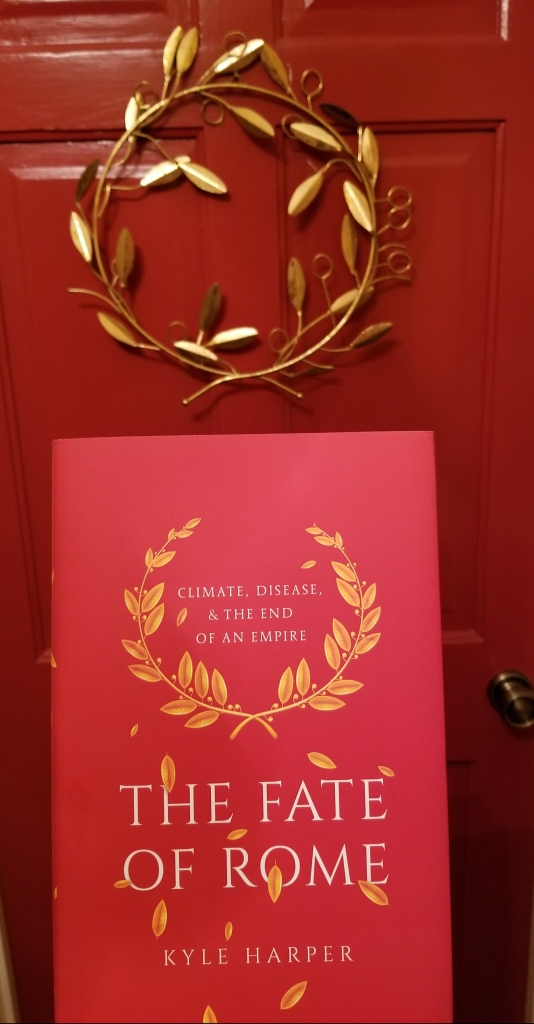As I write this, that annual scourge of winter, flu season, is in full flower. Flu requires a seasonal vaccination to provide temporary immunity, so the cycle of projecting the strain and concocting an annual vaccine will continue with mixed results for the foreseeable future. Meanwhile, in the United States there are regional outbreaks of measles. Unlike the flu, long-term immunity to measles has been possible by vaccination for decades. But in recent years, an anti-vaccination movement has taken hold and . . . yep; the outbreaks are in areas with high percentages of un-vaccinated persons.
This is an odd intro to a book-review blog, but I think relevant. In my first “Very, Very Short Book Review”, I expressed my desire of “recommending some books with Ancient Dan-type subject matter, but with connections to current events.” Kyle Harper’s The Fate of Rome fits the bill on both counts and triggers the second of this (obviously, very occasional) series.
Kyle Harper, The Fate of Rome: Climate, Disease, & the End of an Empire (Princeton: University Press, 2017); ISBN: 978-0-691-16683-4.

Harper treats the oft-discussed subject of the Fall of Rome from a different angle than most, focusing on the role of persistent disease morbidity and mortality, unexpected climate change, and three decisive pandemics. With acute rhetorical and story-telling skill, Harper has fashioned a page-turner as he builds his case that decades of exceptionally good climate, resulting population growth, and the extensive connectivity of the Roman world created prime conditions for the three pandemics. The triggers, he argues, are unforeseen climate interruptions from volcanic activity and a normal cooling cycle.
Some have challenged parts of Harper’s arguments and data, and perhaps with good reason. The thing that makes the book such a good read—its engaging style and vivid description—also creates an opening for the charge that Harper uses his rhetorical skill to cover weaknesses in the data. This objection is aided by the book’s awkward reference style.[1] Yes, as is charged, there are a few claims for which it is impossible to find Harper’s sources; but with this crazy system oversights are practically invited. Footnotes are better. That criticism notwithstanding, The Fate of Rome is a marvel of research across a range of specialties in ancient history, climate science, and biology. The beauty and value of the volume, for me, is its attention to the workings and dynamics of systems and human behavior. Here, study of the past is quite relevant for the present.

What does all this have to do with the current outbreaks of measles? The three pandemic “plagues” were catastrophic, killing unprecedented percentages of the population. But everyone did not die. The pathogens lost their overwhelming effect when the population was dominated by survivors who gained immunity. Community wide immunity is what keeps pandemic-capable pathogens at bay. Happily, in our modern world, we have easy immunity to some threats through vaccination programs. Yet, movements have developed and persist that decry and resist such programs. This is not the place to argue the science—but the anti-vaccination people rely on disproved studies, pseudoscience, rumor, distrust of government (perhaps understandable), and disinformation planted by Russian trolls. I did not make this up and it is not “fake news!” (check the study published in the American Journal of Public Health here).[2] Indeed, in the wake of the recent measles outbreaks, Facebook is reportedly considering ways to limit anti-vaccine disinformation.
The compulsory vaccination issue is complicated by concerns for individual choice, privacy, and especially religious freedom. I get that and don’t want to presume to have arguments for all angles. But a read of Harper, The Fate of Rome might bring a dose of reality about the way systems can surprise the complacent and potentially change the Fate of Us.
One of Harper’s observations is that the second Roman pandemic, the “Plague of Cyprian” in the mid-third century, is responsible for elevating Christianity to a prominent position in the Empire and paved the way for its dominance in the next centuries. This view is shared by other scholars of the late Empire. Ironically, elements of the faith that once benefited from the fear of rampant infectious disease now may be a factor in allowing one such disease to return (Rule 4).
Anti-vaxxers: the pathogen community thanks you very much (with a special shout-out to Russian trolls for their part in the Collusion).
Thanks for looking! ![]() (read the footnotes)
(read the footnotes)
[1] Endnote numbers appear only at the end of paragraphs and the corresponding notes (at the end of the book) contain multiple references, sometimes keyed by a short quote from the paragraph to guide the reader to the right source. As I spend at least half of my time in reading a book like this in the notes, this is a maddening system.
[2] David A. Broniatowski, et al, “Weaponized Health Communication: Twitter Bots and Russian Trolls Amplify the Vaccine Debate,” American Journal of Public Health. 108(10): 1378–1384. doi:10.2105/AJPH.2018.304567.


Enjoyed reading this Dan. Tommy
Sent from my iPhone
>
LikeLike